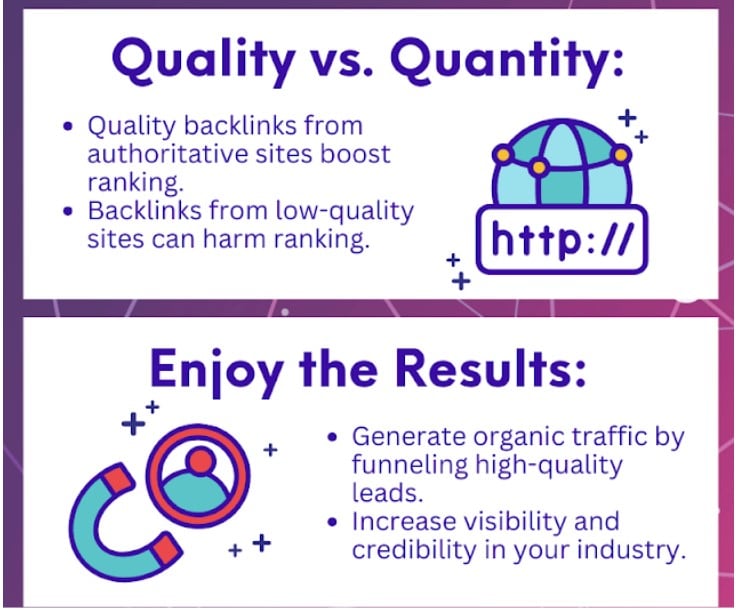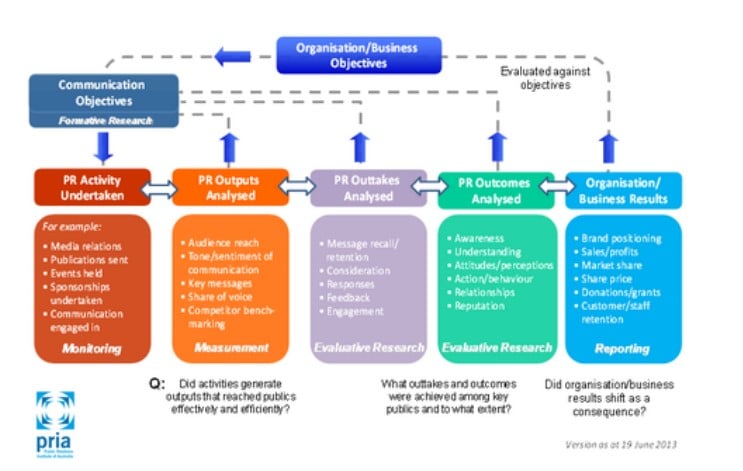Consider you’ve just launched a new PR campaign for a product announcement. You wait for the campaign’s result. You send a press release and get some coverage. Then your boss asks, “So, what did we achieve?” And you don’t have the answer.
78% of CMOs need to see specific and quantifiable evidence of how PR adds value before they can approve or even maintain their spending.
Without clear measurement, PR is of no use. Marketing and sales can point to clicks and conversions, but PR also should demonstrate its impact through proof.
In this article, we will look at 14 key metrics you can use to measure PR success and how to put them into practice.

Impact of PR Campaign Measurement
Let us briefly discuss why measurement is a strategic approach.
- Accountability and ROI
Measuring the real ROI of your PR campaigns is important because a CEO or CMO is under pressure to generate results. Therefore, PR teams need to clearly show that their work has brought results. The campaign should be successful because of the increased sales and not just some media mentions.
- Optimization in flight
Measurements help you find which strategy is working and which is not. If a campaign is not working, you can stop spending money on it.
- Strategic alignment
If a PR team shows relevant results in terms of revenue growth, acquiring new leads, and increasing brand awareness, then leaders take the team seriously and include them in important decisions.
- Learning and benchmarking
With time, you may have clear data about PR campaigns and their performance. Analyzing that data will help you identify patterns and predict insights.
But measurement has its own challenges. Many PR teams say that they sometimes don’t trust their own metrics.
Traditional feedback systems like surveys and ratings often face bias, low response, and outdated data. This makes them ineffective for today’s fast and real-time PR needs.
So, the goal is to go beyond simplistic feedback or surface-level metrics and adopt a multi-dimensional measurement approach.
Here are the 14 key metrics you should consider.
14 Key Metrics to Track PR Campaign Effectiveness
Measuring a PR campaign’s effectiveness is important to check whether you have achieved the desired results or not. The following metrics are a blend of traditional ‘output’ metrics and advanced ‘outcome’ metrics to effectively measure campaigns.
1. Active Coverage Count
This is the total number of articles, blogs, or news stories your campaign earned. It’s your starting point.
Example: If your press release appears in 10 online news portals, 5 blogs, and 3 print magazines, your active coverage count is 18 mentions.
Tip: Don’t just count every mention. Separate high-value coverage (big media outlets) from smaller blogs. Consider B2B vs B2C. In B2B, focus more on trade journals and industry publications, and make sure your efforts align with a strong go-to-market strategy. In B2C, prioritize mainstream media and lifestyle outlets.
2. Potential Reach or Impressions
This means how many people have seen your posts based on the impression rates or reach.
Example: If your article was published in a magazine with 500,000 monthly readers and shared on social media, reaching another 100,000, the potential reach is 600,000 impressions.
Tip: Always compare reach with engagement. A million impressions are less meaningful if nobody clicks or talks about you. Platforms like Agility PR Solutions help estimate real impressions.
3. Share of Voice
This is an important metric to measure the performance of your product. It measures how much attention your product receives in the media compared to your competitors. In other words, it shows the proportion of conversation around your brand.
Example: If your brand had 200 mentions, and your top three competitors had 300 combined, your share of voice is 40% (200 ÷ 500).

Tip: Track your brand alongside 2 to 3 main competitors. If your SOV drops, adjust your messaging or increase outreach.
4. Media Outlet Quality or Tier
The coverage of different campaigns is different. Some outlets enjoy higher credibility, wider reach, and greater influence over your target audience. Therefore, the impact of a mention depends on the authority of the publication, not just on quantity.
Example: For a campaign, you get a mention in a tiny blog post, and for another, you find a mention in The Economic Times. Which one is a more coverage metric? Obviously, the second one.
Tip: Assign weight to outlets (e.g., Tier 1, Tier 2). Always aim for at least 30% of coverage from top-tier media. Build long-term journalist relationships in your niche.
5. Key Message Penetration
In this metric, you measure how many articles actually include your core messages (e.g., “trusted,” “secure,” “affordable”).
Example: If you wanted the phrase “climate-friendly” included, and 7 out of 10 media stories featured it, then your key message penetration rate is 70%.
Tip: List 2 to 3 key messages before a campaign. Afterward, check if media coverage repeated those words. If not, refine your press kit or briefing style.
6. Sentiment or Tone Analysis
This evaluates whether mentions are positive, negative, or neutral. It helps track public perception of your brand over time.
Example: Out of 100 mentions, if 70 are positive, 20 neutral, and 10 negative, then your sentiment score is 70% positive.
Tip: Use AI tools like Agility PR Solutions to track tone. If negative coverage rises, act fast with clarifications or positive stories.
7. Engagement Metrics
Engagement shows how people interact with your PR-driven content in terms of likes, shares, comments, and clicks. It reflects the interest of the audience in your product.
Example: A PR tweet about a campaign gets 5,000 impressions, 500 likes, and 200 shares. Engagement rate = (700 ÷ 5,000) × 100 = 14%.
Tip: Look for whether the right people are engaging with your PR or not. For example, a nonprofit running a climate awareness campaign might see only 200 shares. But their DM’s are filled with detailed comments from teachers and students. That’s meaningful because it shows the message reached the proper audience.
8. Referral or Earned Traffic
This measures the number of visitors landing on your website from PR coverage. It proves that media placements and mentions drive audience action.
Example: If Google Analytics shows 1,500 sessions came from a link in a national newspaper article, that’s 1,500 earned visits.
Tip: Use UTM tags in press releases or influencer links. For example, a hospitality & tourism business could track that a feature in National Geographic Traveler brought 1,200 visitors to its booking page, with 20% exploring itineraries with those tags.
9. Backlinks or SEO Impact
About 60% of earned media articles include backlinks to a brand or source. It is an important metric because PR mentions that include hyperlinks to your website improves search rankings and long-term visibility.
Example: If your PR article in Forbes links to your site, that backlink boosts your domain authority and drives direct referral traffic.
Tip: Actively request backlinks when the media publishes your story. For example, a university running a research PR campaign might secure backlinks from Nature. It increases credibility and drives students or researchers searching online to their site.


10. Conversion Rate from PR Originated Traffic
It is the percentage of website visitors from PR who take an action like signing up, donating, downloading, or buying.
Example: Out of 2,000 visits from a PR story, 200 people registered for a webinar. Conversion rate = 200 ÷ 2,000 = 10%.
Tip: Track with tools like Google Analytics. Consider a music festival’s PR campaign. Out of 5,000 visits, 400 people bought early-bird tickets (an 8% conversion). That proves that PR efforts generated sales.
11. Lead Volume or Sales Impact
This calculates the number of leads, signups, or purchases that PR can be linked to. It shows business growth driven by PR.
Example: A hospital campaign leads to 500 extra cardiac evaluation inquiries in a month, proving PR generated demand.
Tip: Integrate with your CRM or ticketing system. For example, a hospital launches a health awareness PR campaign. The coverage was in regional newspapers; therefore, the inquiries for the check-up packages jumped by 30%. That’s PR directly driving business.
12. Brand Lift or Awareness Survey Results
It is the measurement of whether people recognize, recall, or feel positively about your brand before and after a campaign.
Example: A pre-campaign survey shows 20% brand recall while a post-campaign survey shows 40%. That’s a 20-point brand lift.
Tip: Run short digital surveys. For example, after a movie promotion PR campaign, an entertainment company might see recall for their film title jump from 15% to 45% among the 18 to 25 age group. This shows PR improved awareness.
13. Geographic or Demographic Reach
This determines whether your PR message reached the right people in the right places. Target accuracy is key here.
Example: If your PR campaign was aimed at Canadian audiences but 70% of coverage was in the UK media, then targeting was off.
Tip: Track coverage and audiences. Suppose a state government runs a PR drive to promote a new local policy. If most coverage appears in national media rather than regional outlets, they’ve missed the target audience. Tracking geography and demographics helps ensure messaging lands with the right communities.
14. Crisis or Issue Response Metrics
This evaluates how quickly and effectively you respond to negative publicity. Speed and sentiment recovery matter most.
Example: If negative mentions drop from 500 to 200 within a week after a press release, that’s a 60% improvement.
Tip: Track how quickly sentiment shifts after your response. For instance, an airline operator faces backlash after a flight delay incident goes viral. By issuing a same-day apology video and offering refunds, they cut negative mentions by 50% within a week. The metric here is speed plus improvement in sentiment.
How to Implement PR Measurement Successfully

To implement PR measurement successfully, you can refer to the following approach.
1. Align Measurements With Business Goals
Decide upfront if the focus is leads, awareness, reputation, or sales. For product launches, ensure PR metrics support your go-to-market strategy by showing how campaigns build awareness and generate leads.
2. Build a Measurement Framework and Dashboard
Use dashboards (Sheets, Data Studio) with clear definitions and benchmarks. Follow frameworks like the Barcelona Principles.
3. Use Tools and Automation
Adopt media monitoring, social listening, analytics, and CRM tools. Automation saves time and ensures real-time insights.
4. Mid-Campaign Check-Ins
Don’t wait until the end. Establish weekly or biweekly pulses: which metrics moved? What insight emerges? What can you shift (messaging, media targeting, influencer mix)?
5. Narrative + Numbers in Reporting
Metrics are important, but with numbers in reporting, you need to tell a story as well. Explain why a metric moved, what action you took, and what you’ll do next.
6. Benchmark and Iterate
Compare with past campaigns, industry norms, and competitor activities. Drop metrics that consistently underdeliver, and double down on ones that correlate with business impact.
Transform PR Insights Into Real Business Impact
The 14 key metrics we’ve explored in this article should help every PR team:
- Show accountability and ROI with numbers that leadership trusts.
- Optimize campaigns in real time instead of waiting for post-mortems.
- Align PR strategy with business goals.
- Build benchmarks for smarter future campaigns.
- Avoid vanity metrics and focus on what drives true impact.
In short, PR must help in achieving the goals defined by you.
If you want the same clarity, accountability, and real business impact for your PR campaigns, start by choosing a reliable partner. Agility PR Solutions is the only all-in-one and award-winning platform that integrates generative AI at every step of the PR process. We help you deliver smarter, faster, and more impactful communications.
Contact us today and see how data-driven PR can transform your brand’s story.



